Top 8 Most Beautiful Historical Sites In Thailand
Thailand, once known as Siam, has a diverse terrain with even more diverse historic places to explore. The early time of the Mon Khmer, who were the first to ... read more...accept Buddhism, the 400-year-old kingdom of Ayutthaya, and the reign of the great Taksin are all part of Thailand's vast history. Here are some of the most beautiful historical sites in Thailand, chosen from a large variety of incredible locations.
-
Ayutthaya was a Thai ancient city with stunning remains that provide witness to a once-thriving port metropolis. Ayutthaya's numerous Buddha statues, as well as its massive complex of temples, which originally numbered over 400 palaces, are still visible to visitors.
Bicycling is perhaps the best way to move around Ayutthaya, with its numerous bike paths offering a natural itinerary. A trip to Ayutthaya normally takes a whole day, especially for those traveling from Bangkok, and trips are available.
Traditional costumes, gorgeous architecture, distinctive culture and custom, authentic entertainment, folk performance, and the simple lifestyle of Thai people all draw visitors to the Ayothaya floating market. It is a popular tourist destination for both local and foreign visitors who want to relax and enjoy the beautiful surroundings in Thai manner. Tourists may enjoy some great and wonderful meals or shop for souvenirs at many establishments scattered throughout the market while touring it.
Due to its closeness to Bangkok, Thailand's capital city, Ayutthaya is now one of the country's most famous tourist destinations. The old city draws a wide range of visitors, from history lovers to typical tourists interested in Thailand's rich past.
Location: Ayutthaya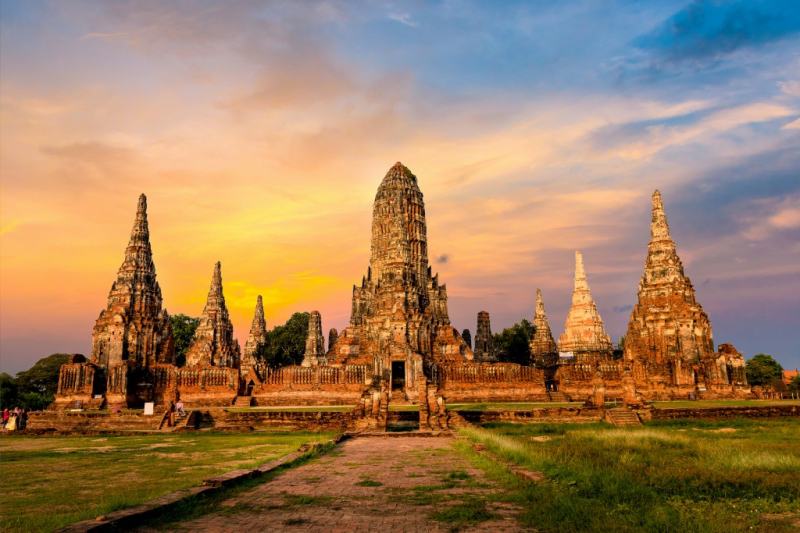
Photo: datviettour.com.vn Video: Expedia -
Since the time of the Chakri Dynasty's first monarch, King Rama I, also known as Buddha Yodfa Chulaloke, in the 18th century, the Grand Palace has been a royal home in Bangkok. The Grand Palace, with its exquisite Thai-style architecture and a total area of over 200,000 square meters, is one of the most beautiful historical sites in Thailand.
A tour to the Grand Palace, which is made up of a number of structures including government offices, monasteries, and a museum, can take several hours. When you approach the palace complex, you'll find yourself in the outer court, which used to hold government agencies but now houses the famed Emerald Buddha Chapel, as well as the Museum of the Temple of the Emerald Buddha, which houses numerous antiquities related to Wat Phra Keo.
The remainder of the complex is separated into inner and outer courts, some of which are off-limits to the general public. The Dusit Maha Prasat throne, on the other hand, is open on weekdays and comprises an audience hall with a mother-of-pearl throne created by King Rama I, as one of the least renovated structures in the complex.
On weekdays, tourists can visit the Amarin Winichai Mahaisun Audience Hall. All key state ceremonies are held in the Grand Palace's Phra Maha Monthien complex of structures. If you want to learn about the history of the Grand Palace and make sure you follow the rigorous modest dress code, it's a good idea to hire a tour ahead of time.Location: Bangkok
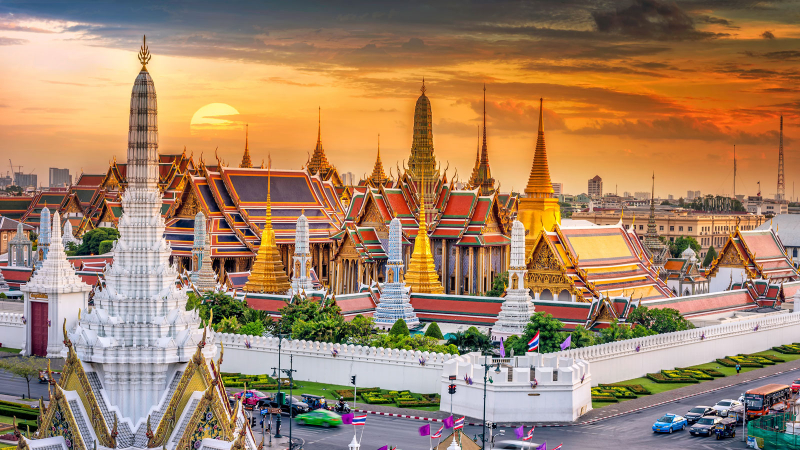
Photo: www.tourthailan.net.vn Video: Wonderliv Travel -
Ancient Siam, or Muang Boran in Thailand, is a privately owned museum park that spans 200 acres and is supposedly the world's biggest outdoor museum. Ancient Siam, which is shaped like Thailand, is virtually a whole reproduction of the nation, complete with miniature copies and reconstructions of most of the country's most notable landmarks in their proper positions.
While there are some actual antiques on display at Ancient Siam, the charm of this little-known site rests in its overview of Thai history and the meticulous attention to detail in replicating national treasures.
Ancient Siam is a time machine that transports visitors back to Thailand's past, blending reproductions of historically significant places with real structures relocated for preservation. The Tiger King's Palace of Phetchaburi, Preah Vihear, the Ancient Theatrical Pavilion, The Royal Stand, and other attractions are among the attractions.
The park's whole layout resembles the form of Thailand, with sites arranged in accordance with their actual geographic placements. Wander through lush landscape gardens brimming with native flowers and trees, streams and lakes, and a smattering of restrooms and stores.
Ancient Siam is the world's biggest outdoor museum and one of the most beautiful historical sites in Thailand. While it is not strictly historic in and of itself, it does provide excellent reconstructions of real-world locations.Location: Bangpoo, Samut Prakan, Thailand
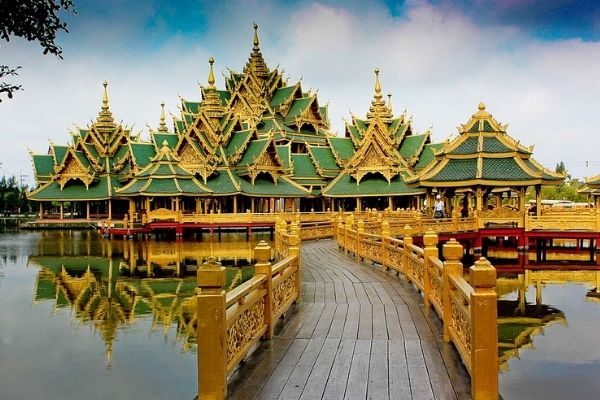
Photo: VnExpress Video: Chile N Thailand Travel -
The Temple of the Reclining Buddha, also known as Wat Pho, is a first-class royal monastery and one of Thailand's most stunning historical attractions. The iconic Wat Pho, located on Rattanakosin Island south of the Grand Palace, is home to over 1000 Buddha statues, including one of the largest single pictures at 46 meters in length.
Wat Pho was also home to a French Star Fort, which King Phetracha dismantled during the Siege of Bangkok in 1688. Following the Burmese conquest of Ayutthaya in 1767, the capital was shifted to Thomburi, where King Taskin placed his palace across the river from Wat Pho, increasing the monastery's stature.
The Temple of the Reclining Buddha as we know it today has undergone two further restorations since then: one during King Rama III's reign and another in 1982. The Reclining Buddha, with its gold-plated body reaching 46 meters long and 15 meters high, is the greatest depiction of Buddha in Thailand.It's also the birthplace of Thai massage, which visitors can partake in at the Temple of the Reclining Buddha. Wat Pho is a 20-acre temple with a view of the current monastery, in addition to the Reclining Buddha and Thai massage.
Location: Bangkok
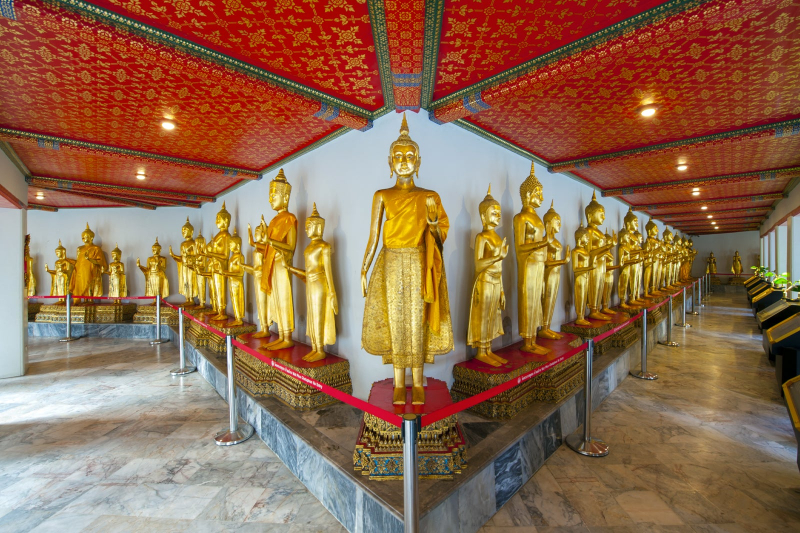
Photo: vi.hotels.com 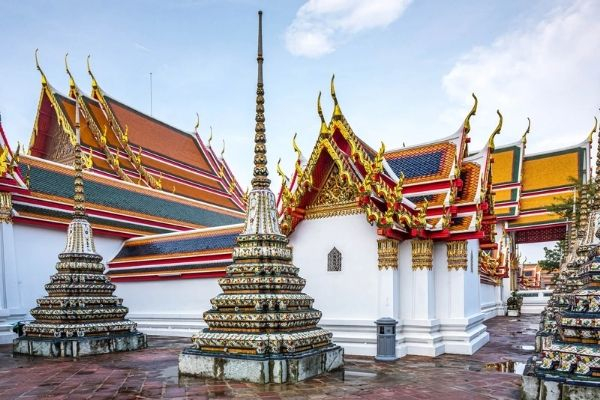
Photo: imagewrighter.com -
The Emerald Buddha Temple (Wat Phra Kaew) is a holy monastery on the grounds of Bangkok's Grand Palace and one of the most beautiful historical sites in Thailand. The Temple of the Emerald Buddha, which is made up of a collection of amazing gold structures, houses a famous two-foot figure of Buddha in its assembly hall, or 'Ubosoth.'
The Emerald Buddha, which is really made of jade, is supposed to have been maintained in plaster casing in a Chiang Rai monument until it was discovered after the monument was damaged by lightning in the fourteenth century. It was found in 1464 and has since sparked several disagreements and even conflicts.
It was transported to Bangkok by King Rama I in 1782 and presently sits on a seat in the Temple of the Emerald Buddha. The Emerald Buddha's attire, like that of other Buddha statues, is changed according to the seasons in a tri-annual process overseen by the Thai king. A sequence of paintings illustrating the Buddha's life, painted in the Ayutthaya style, may also be seen in the Temple of the Emerald Buddha.
As with the Grand Palace in general, having a guide with you, which you may arrange in advance, might be advantageous. The Grand Palace has a rigorous dress code.Location: Bangkok
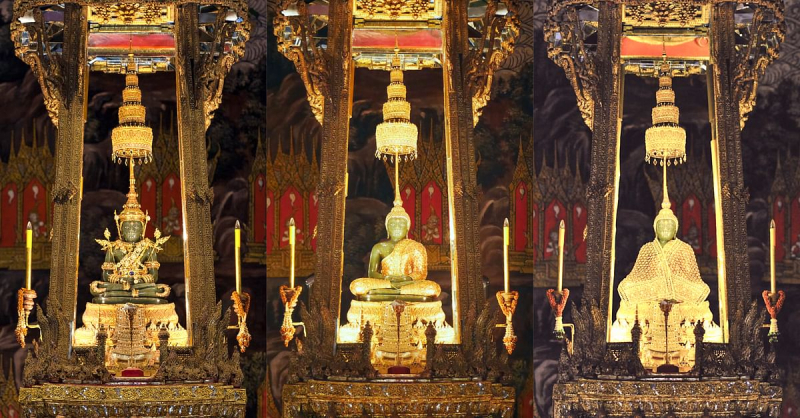
Photo: www.worldhistory.org 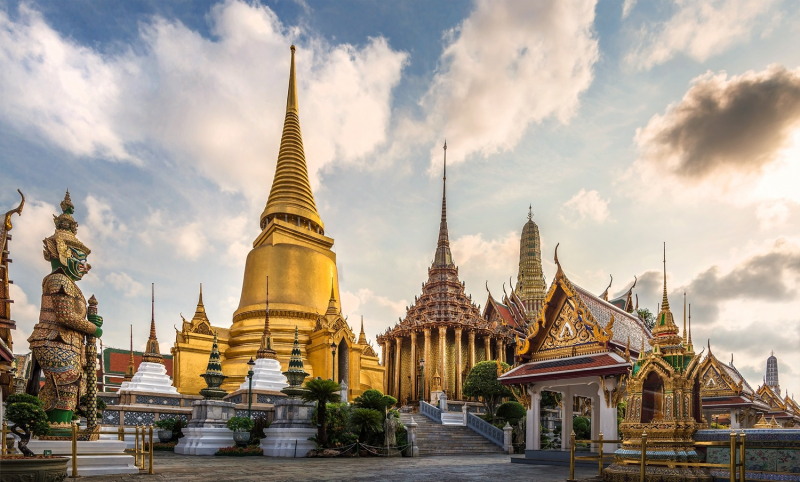
Photo: experitour.com -
The Kwai River Bridge was built as part of a meter-gauge railway built by the Japanese during WWII. It is most known for being the scene for the 1957 World War II epic Bridge on the River Kwai.
The Death Railway, which extended for 250 miles from Ban Pong, Thailand, to Thanbyuzayat, Burma, is now known. It was constructed with the help of POWs and Asian slave workers who were held in deplorable circumstances. The project began in October 1942 and took a year to finish. It was designed to convey cargo close to India on a regular basis in support of a planned Japanese invasion on India. The bridge was bombed by the Allies in 1944, and pieces of it were damaged and are now on display at the War Museum.
The Death Railway got its name from the large number of people who died while building it, notably the construction of railway bridge number 277 in June 1943, which allowed the track to cross what is now known as the Khwae Noi River and is recognized across the globe as the Bridge on the River Kwai. Estimates vary, but over 13,000 of the over 60,000 prisoners of war imprisoned on the Death Railway, as well as as many as 90,000 Southeast Asian civilian forced laborers, are estimated to have died.
The bridge is now accessible by foot or a tiny tourist train that goes back and forth. Every year on November 28th, a light and sound spectacular is held to remember the bombing. This is also in the list of the most beautiful historical sites in Thailand.Location: Kanchanaburi
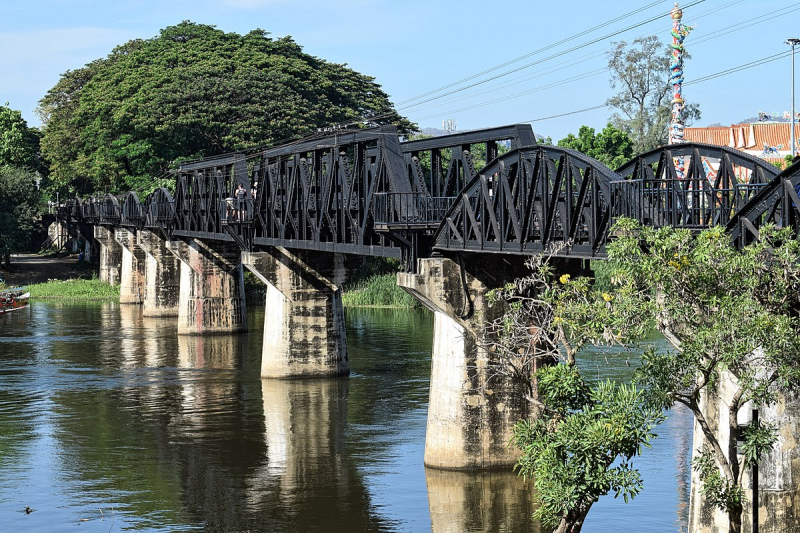
Photo: Wikipedia 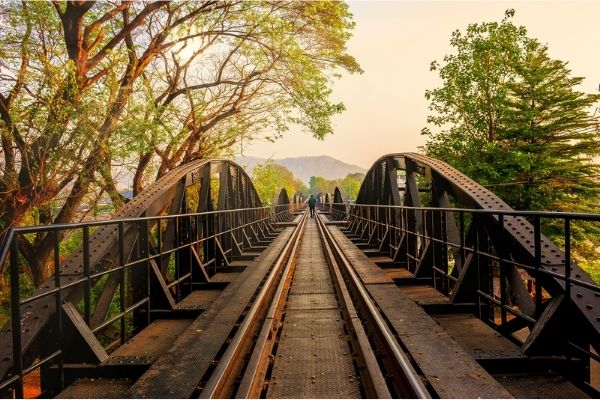
Photo: www.tourismthailand.org -
In Thailand, Wat Pratat Doi Suthep is a Buddhist Theravada temple and sacred location. Although various traditions attest to its beginnings, the true origins of this beautiful structure remain unknown.
Otherwise, it is said to date from 1383, when the first stupa was constructed there, and has subsequently been extended. A monk had a dream that led him to the mystical shoulder bone of Buddha, according to mythology. While one part of the shoulder bone was transported to a temple in northern Thailand, the other half was entrusted to a white elephant, who carried it through the jungle and up the Doi Suthep mountain in 1368.
Unfortunately, the elephant died, which was interpreted as a bad omen. On the spot, King Nu Naone quickly ordered the construction of a temple.Wat Pratat Doi Suthep is a lavishly adorned temple that may be accessed by climbing 309 steps. If you don't want to climb, there is a tram that will transport you up to the pagodas. A big white elephant statue commemorates the origin story and stands at the location.
Location: 9 หมู่ที่ 9 Mueang Chiang Mai District, Chiang Mai 50200, Thailand
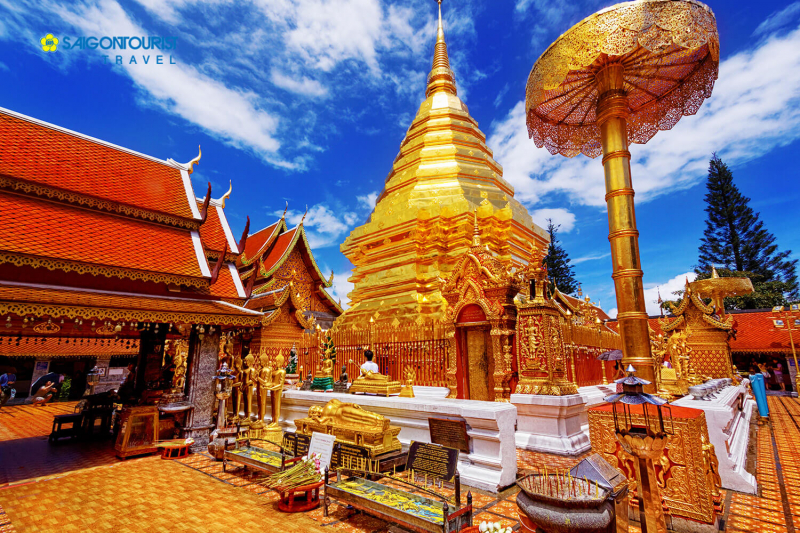
Photo: dichoithailan.net 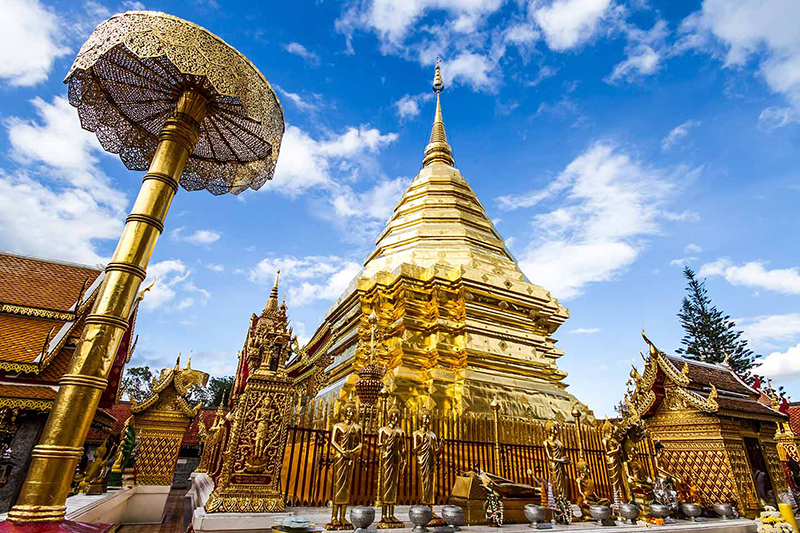
Photo: www.yong.vn -
The primary or major holy stupa, Phra Pathom Chedi, is Thailand's highest stupa, with a spire reaching 124 meters into the sky. Despite the fact that the stupa has no known historical roots, it has been a sacred place at Phra Pathom Chedi since the era of Emperor Ashoka on the Indian subcontinent, which lasted from 269 to 232 BC.
Buddhist writings from 675 mention the stupa for the first time. However, archaeological evidence from the 4th century suggests that the stupa was one of the most important stupas in ancient Nakhon Pathom, the major Dvaravati culture town from the 6th to the 8th centuries.
In the 11th century, the Khmer Empire conquered Dvaravati villages, including old Nakhon Pathom. After that, a Khmer-style prang was added to the summit of the stupa. The city and Phra Pathom Chedi had been abandoned and overrun by the jungle after Anawrahta of the Pagan Kingdom conquered and devastated old Nakhon Pathom.Today, visitors may see the amazing complex, which, when viewed from above, resembles a massive Buddhist mandala and reflects Buddhist cosmology, with Phra Pathom Chedi at the center. A large golden Buddha statue may be found within Phra Pathom Chedi.
Location: 27 Tesa Rd, Phra Prathom Chedi Sub-district, Mueang Nakhon Pathom District, Nakhon Pathom 73000, Thailand
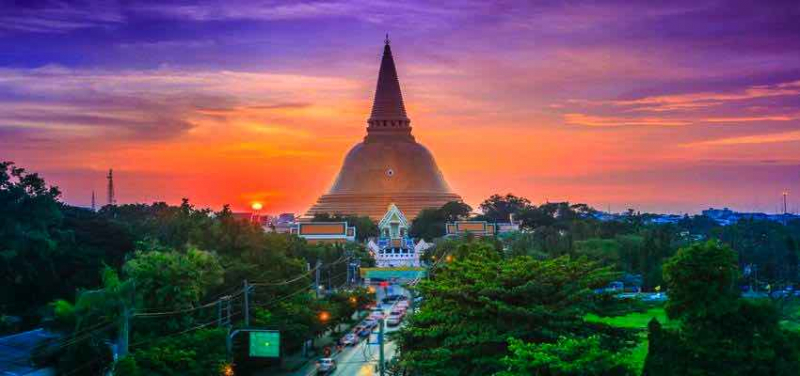
Photo: chatuchak.vn 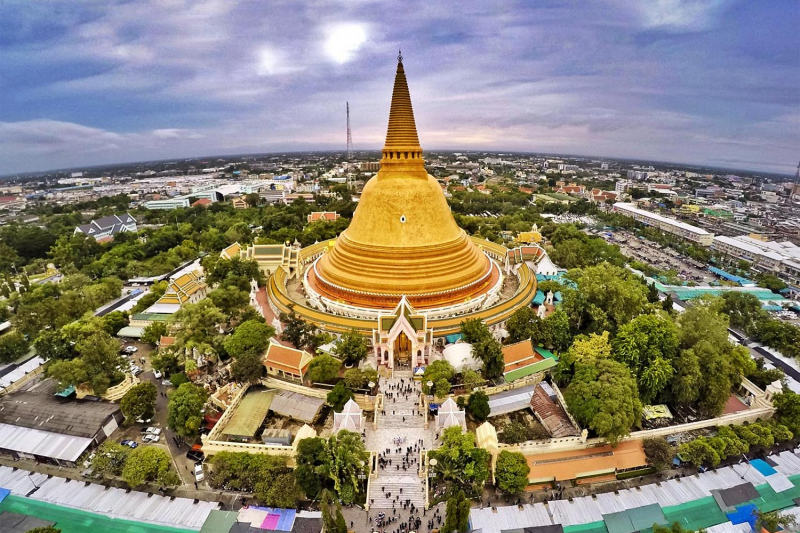
Photo: bangkokpost.com





























